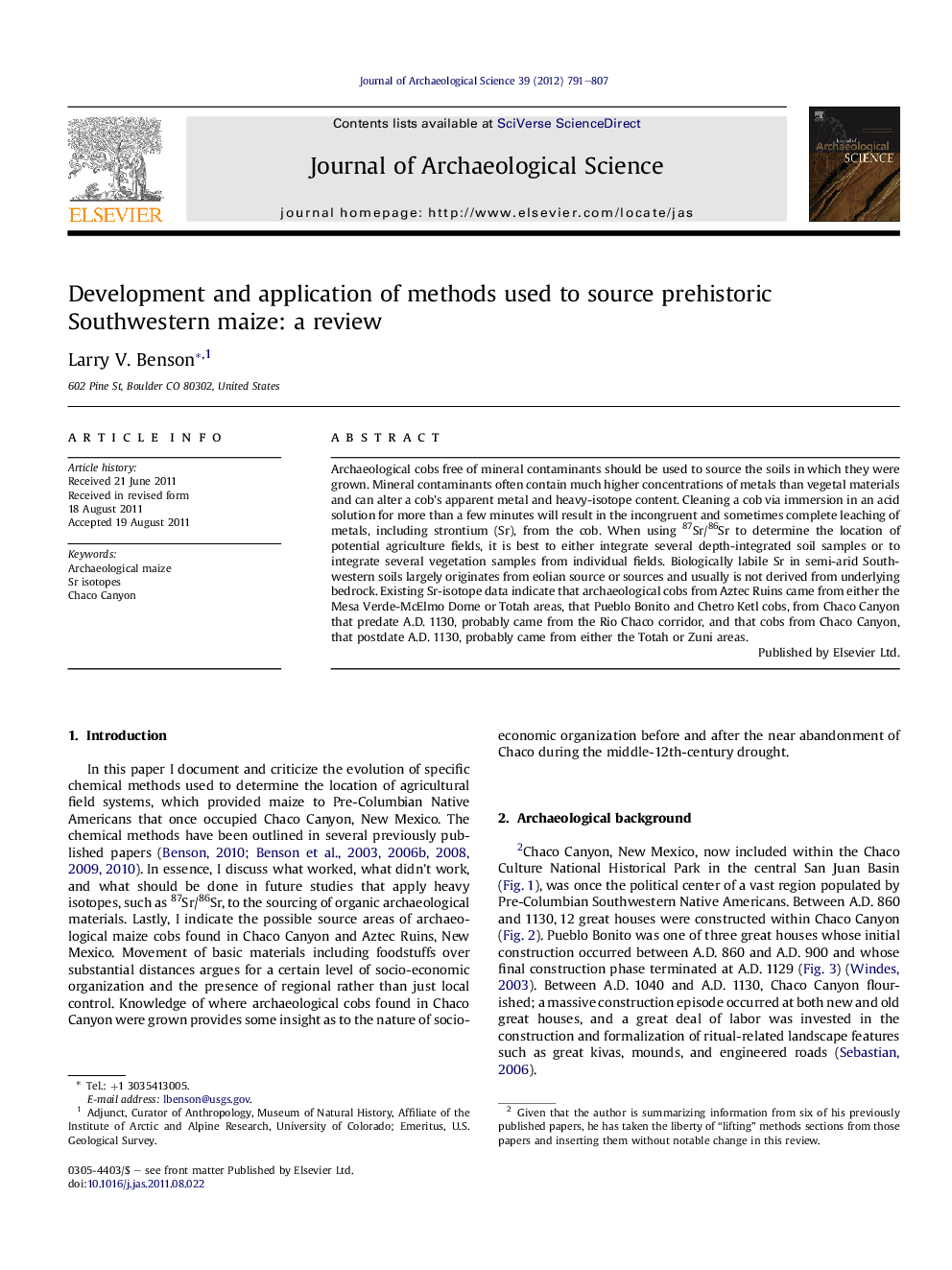| کد مقاله | کد نشریه | سال انتشار | مقاله انگلیسی | نسخه تمام متن |
|---|---|---|---|---|
| 1035573 | 943858 | 2012 | 17 صفحه PDF | دانلود رایگان |

Archaeological cobs free of mineral contaminants should be used to source the soils in which they were grown. Mineral contaminants often contain much higher concentrations of metals than vegetal materials and can alter a cob’s apparent metal and heavy-isotope content. Cleaning a cob via immersion in an acid solution for more than a few minutes will result in the incongruent and sometimes complete leaching of metals, including strontium (Sr), from the cob. When using 87Sr/86Sr to determine the location of potential agriculture fields, it is best to either integrate several depth-integrated soil samples or to integrate several vegetation samples from individual fields. Biologically labile Sr in semi-arid Southwestern soils largely originates from eolian source or sources and usually is not derived from underlying bedrock. Existing Sr-isotope data indicate that archaeological cobs from Aztec Ruins came from either the Mesa Verde-McElmo Dome or Totah areas, that Pueblo Bonito and Chetro Ketl cobs, from Chaco Canyon that predate A.D. 1130, probably came from the Rio Chaco corridor, and that cobs from Chaco Canyon, that postdate A.D. 1130, probably came from either the Totah or Zuni areas.
Journal: Journal of Archaeological Science - Volume 39, Issue 4, April 2012, Pages 791–807